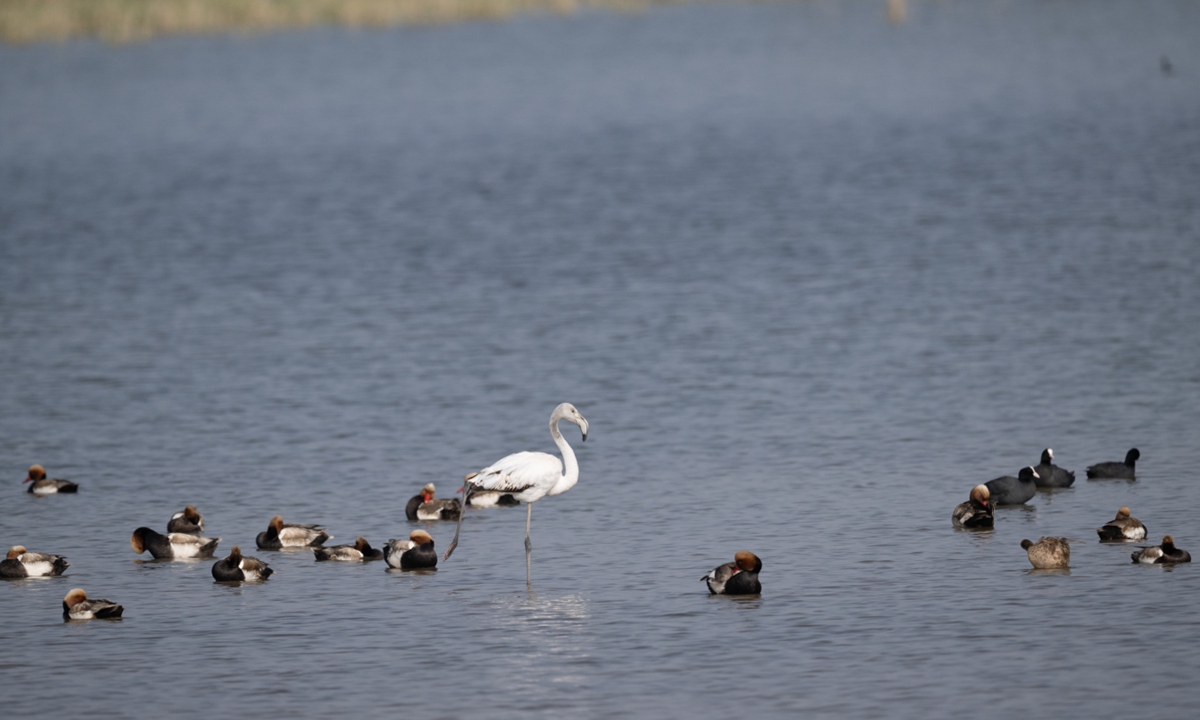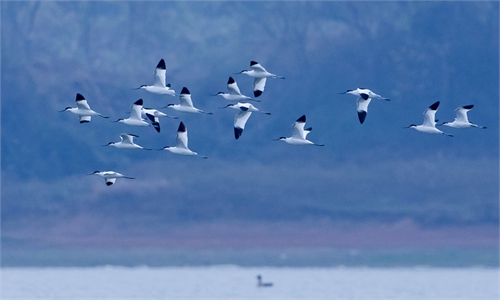ARTS / CULTURE & LEISURE
Tropical greater flamingo spotted at lake in N.China's Inner Mongolia

Photo: Courtesy of Wuliangsu Lake Wetland Nature Reserve
A rare sighting of a greater flamingo has been reported at Wuliangsu Lake, also known as Ulan Suhai Lake, in North China's Inner Mongolia Autonomous Region. This marks the first time in recent years that this species has been observed at the lake. This discovery not only adds a new highlight to the lake's biodiversity but also brings renewed hope and motivation for local ecological conservation efforts while showing that local government efforts to protect and restore the Wuliangsu Lake ecosystem have led to significant environmental improvements."Starting from May 20, volunteers began spotting a rare bird with a boot-shaped curved beak and a long neck, which from a distance resembled a large swan. Experts later identified the bird as a greater flamingo. We have arranged special personnel to conduct key inspections around the lake area to prevent human activities from interfering with the habitat of the greater flamingo," Chen Feng, director of the Wuliangsu Lake Wetland Nature Reserve authority, told the Global Times.
The greater flamingo, also known as the red flamingo, is a beautiful and rare wading bird typically found in tropical and subtropical areas. Sightings of the greater flamingo in China are extremely rare, making this discovery at Wuliangsu Lake particularly significant. Ornithologists and ecologists are highly interested in this discovery. They note that the greater flamingo's presence indicates the lake's ecosystem has reached a high level of environmental quality, reflecting significant progress in biodiversity conservation at the lake.
"The number of bird species inhabiting Wuliangsu Lake has steadily increased, from 185 species in 2000 to the current 260 species, including 16 nationally protected species such as the Baer's pochard and the great bustard," said Chen.
China's migratory bird routes include three paths passing through Inner Mongolia, one of which goes through Wuliangsu Lake.
To enhance the protection of migratory birds at Wuliangsu Lake, Wuliangsu Lake Nature Reserve authority have established patrol teams that combine road and lake patrols to prevent illegal hunting and other unlawful activities.
Inner Mongolia University, Inner Mongolia Normal University have cooperated to build a scientific research base in the reserve, and jointly carry out investigation into birds and the breeding ecology of important species. The two universities and the local government have joined forces to conduct long-term follow-up research on wetland protection, ecosystem restoration, and bird survival status, providing intellectual and technological support for wetland bird protection.



